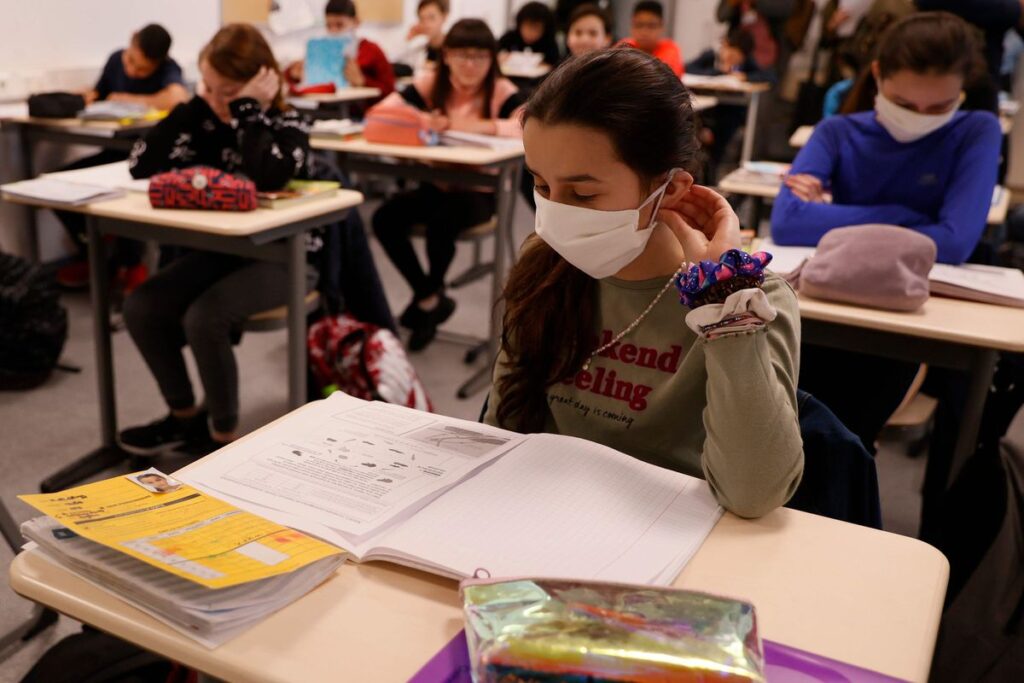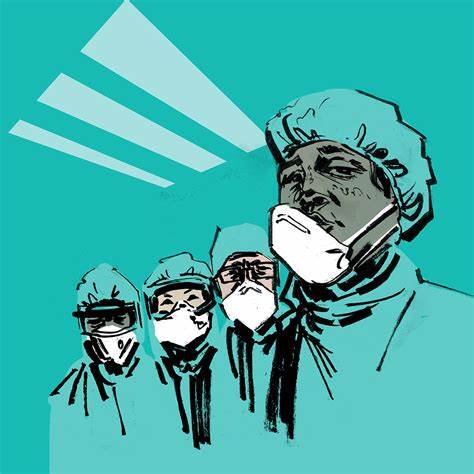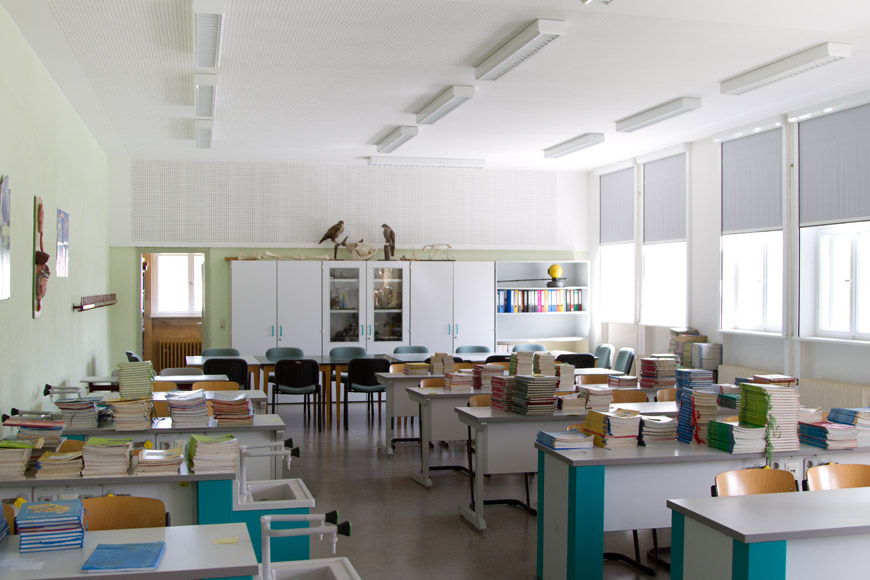How has school districts changed during the age of covid-19?
Prior to COVID
Covid-19 derailed many plans for students and teachers across the world. Many students were expected to come back after a week off for spring break, but instead got emails canceling the rest of the school year. The nation would not have guessed this pandemic to last this long.
Lunch cafeterias, on-campus clubs, rallies, football games, basketball games, and more require close contact with hundreds of people. These events which designed to bring communities together, turned out to make us further apart in the age of covid-19.
Recess now looks like a divided play structure, 6 feet of social distancing, and may be the only part of normalcy many children feel in this current climate.
Thousands of high school students last school year missed out on one of America’s most important coming-of-age events: Prom. Students also missed out on other special dances like homecoming and spring formal.
Millions of college and high school students also missed out on graduation. The special event, where family and friends can celebrate students’ accomplishments, were cancelled nationwide and were instead held virtually.
So, the million dollar question that many parents asked all summer long; will my child be safe?
With the most recent data 95% of covid-19 cases were reported to be from adults and 7% reported cases are from children.
Currently, as schools have slowly begun to reopen, it is too soon to have accurate data on the specific transmission rate of students at schools. However, health officials do know that ventailiation is key for decreasing transmission and having filtered fresh air.
Because Covid-19 is an air-borne virus, simple cough droplets can easily spread since students are in condensed spaces. Air ventilation and opening windows helps to filter out some of those viruses that linger out, and recycle the air.
The New “Normal”
As the new school year began to fast approach, health officials, district boards, and state officials had to quickly and thoroughly strategize how the new year would look like. Some cities like New York City, opted to reopen in phases, and some like Los Angeles chose not to reopen entirely.
New York City has the largest district in the nation, and found reopening to be particularly difficult, as New York has had one of the highest rates of infection of Covid-19.

In early July, Mayor De Blasio laid out the plan for New York City, which will use a “blending model,” that allows for students to learn from home for the month of September and return for in-person classes starting in October.
However, that does not mean that students will be attending classes like they used to. These hybrid models will only hold in classes for 3 days of the week, and the rest will be conducted on line. Students get to choose during the school year between fully-remote and semi-remote depending on their preference.
In other states like Miami, where Covid-19 infection rates were also high, some school districts opted to be full in-person for the new school year.
After a 29 hour debate, Miami-Dade county, decided that they would be fully opening their door to their students in October. The students will have 5 day instructions all in person starting Oct. 14.
So, what does school look like now, for those that are open?
In many schools, routine procedures like putting your books in the locker, taking a sip at the water fountain, attending after school sports were all cancelled in order to decrease the rate of infection.
Most districts implemented new procedures like, daily temperature checks when getting on or off a vehicle or public transportation, distanced lunches (one arm length apart), and always wearing a mask.
Classes once filled with 30 students are now learning from home through a computer screen, or in some states, in class wearing a mask, hand-sanitizing, and 6 feet apart.
The CDC highly recommends for students K-12 grades are required to wear masks at all times, handsantizerings are supplied, and remind students and teachers that masks should be washed everyday.
It is not much different for the students in the higher education system, many colleges have routinely set up random covid-19 tests, fined students for hosting parties, and set up quarantine stations on off campus housing and hotels to help slow the infection rate.
Challenges of Distance Learning
For those students that are not taking in-person classes, they are looking into alternative sources like Blackboard Classroom, Zoom, and Skype to continue the school year.
Although technology has been an instrumental tool to navigate our new ways of life, it still has its limitations.
Thousands of students that rely on district wifi and computer access, have had a harder time to find resources for distance learning. Los Angeles and San Francisco (two of the largest school districts in the state), which decided to go remote this year, saw an influx of computer shortages.
Earlier this summer, three of the biggest computer manufacturers, Dell and HP, and Lenvo, are short 5 million laptops, as most of the computer parts are from China.
However, even with the shortage of laptops, there is an estimated 1.2 million students without interest access, it makes the process of providing distance learning is getting more difficult to solve. There would be no purpose to hand out computers to students who do not have access to the internet.
Communities that are of large Black and Latino populations have also seen hardships with distance learning.
A study found that one-third of Latinos do not have regular access to the internet, and of those that do have interest only 37% has access through a smartphone.
To ratify wifi issues, companies like Google have pledged to bring 100,000 rural families internet access in order for students to be able to remotely learn.
Even with all the charity, schools in California with over 1,000 school districts are still waiting for a backorder of 300,000 chromebooks to hand out to the students who do not have one.
Another quiet issue of remote learning has heavily impacted students with hearing and vision impairments.
Students who also have disabilities like hearing impairments are struggling to keep up in class. Around 700,000 students nationwide are hearing impaired, and sometimes do not have resources like caption to aid them through the class.
In the most unprecedented times, it shines a light on problems millions have faced on a daily basis for years. It is with Covid-19 that these issues are finally highlighted.
Looking Towards the Future
The last school year ending so abruptly, so many high school students and administrators were at a loss when it came to testing and college applications.
With times still uncertain, elite universities , UC system, and other colleges have decided to cut back on some of the traditional college application requirements

This past summer, the University of California announced that they will no longer require the SAT and ACT from students for the 2024 school cycle for all 10 campuses. This means that current high school seniors will not be required to take and submit their testing scores.
So what does this mean for future students? Will admission be harder? What are the new requirements?
For many years, before the pandemic hit, many students complained that the SAT/ACT never really gave an accurate look into a student’s profile.
The new waiving of the tests leaves room for so many students to add more clubs, grades, and extracurricular activities, which is challenging during remote learning.
Since this new phasing out of these tests have just begun, experts are not too sure what the new requirements will be for each, as those have not been released. However, it could be expected that schools will try to find a balance so admissions will be equal, but there is still no real way to tell if it would be ‘harder’ for an admission.

















